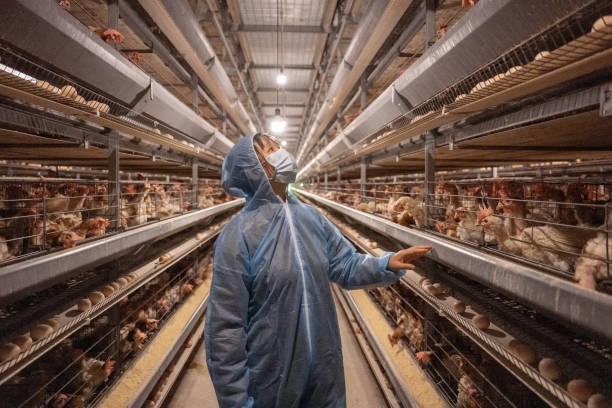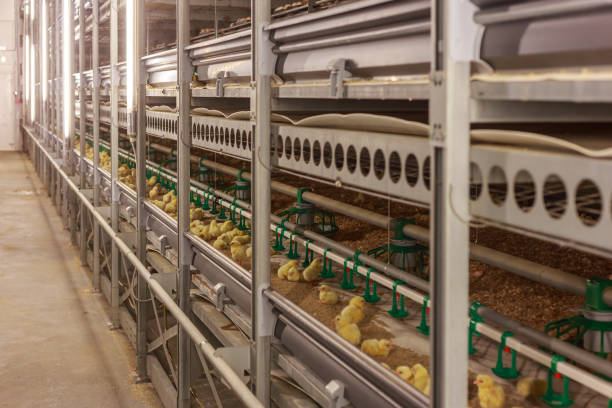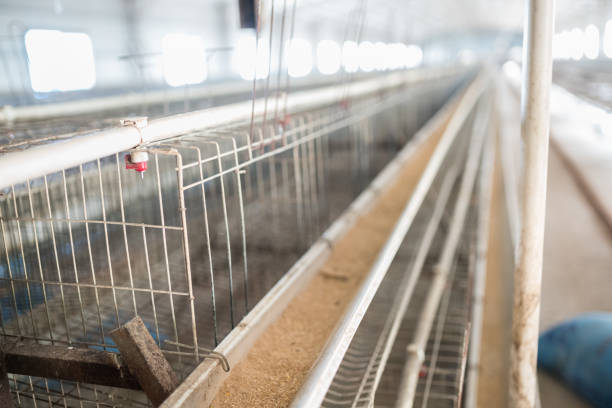Layer Cage Price in Nigeria: Factors Affecting Cost & Finding Deals
The Nigerian poultry industry is a burgeoning sector, and for aspiring and established egg farmers alike, understanding the cost of essential equipment like layer cages is crucial for profitability. Layer cages, designed to optimize space, improve hygiene, and streamline egg collection, represent a significant investment. However, the price tag associated with these cages can vary considerably, influenced by a multitude of factors. This article delves into the key elements affecting layer cage prices in Nigeria and provides practical strategies for securing the best possible deals.
Understanding Layer Cages: An Overview
Before diving into the price analysis, it’s important to understand the different types of layer cages available. Layer cages are generally categorized into two main types:
A-Frame Cages: These are the more traditional type of cage, arranged in A-shaped tiers. They are relatively less expensive initially but often require more manual labor for egg collection and waste removal.
H-Frame Cages: These are a more modern design, arranged in horizontal tiers. They often incorporate automated systems for feeding, drinking, manure removal, and egg collection, reducing labor costs and improving efficiency. H-Frame cages are generally more expensive upfront but offer long-term benefits.
Within these broader categories, you’ll find cages varying in size, capacity (number of birds per cage), and material quality. The choice of cage type will significantly impact the overall cost.
Key Factors Influencing Layer Cage Prices in Nigeria

Several factors interact to determine the price of layer cages in the Nigerian market. Understanding these factors empowers you to make informed purchasing decisions:

Cage Type and Design: As mentioned earlier, A-frame cages are typically more affordable than H-frame cages. The complexity of the design, the level of automation (e.g., automatic feeding, drinking, egg collection), and the cage dimensions all contribute to the price. Cages with more advanced features and larger capacities will naturally command a higher price.
Material Quality and Construction: The quality of materials used in construction significantly impacts the longevity and durability of the cages. Cages made from high-quality galvanized steel, which is resistant to rust and corrosion, will be more expensive than those made from inferior materials. The thickness of the wire mesh, the strength of the frame, and the overall build quality all contribute to the price and directly correlate to the cage’s lifespan and resistance to wear and tear. Investing in high-quality cages, even at a higher initial cost, can save money in the long run by reducing the need for frequent repairs and replacements.
Cage Capacity and Size: The number of birds a single cage unit can accommodate and the overall size of the cage system are direct determinants of price. Larger cages designed for a higher bird density will naturally be more expensive. Consider your farm’s current size and future expansion plans when determining the appropriate cage capacity. Buying cages that are too small might necessitate premature replacement as your flock grows, while buying excessively large cages for a small flock can lead to inefficient space utilization.
Automation Level: The level of automation incorporated into the layer cage system significantly affects the price. Manually operated cages, requiring hand-feeding, watering, and egg collection, are generally the cheapest option. Semi-automated systems, with features like automatic drinking systems, will be moderately priced. Fully automated systems, encompassing automatic feeding, drinking, egg collection, and manure removal, represent the highest investment but offer significant labor savings and increased efficiency, particularly for larger-scale operations.
Manufacturing Origin: The country of origin plays a significant role in pricing. Cages manufactured locally in Nigeria might be more affordable due to lower transportation costs and potentially lower labor costs. However, the quality of materials and manufacturing standards can vary. Imported cages, particularly from countries known for their manufacturing expertise (like China, Europe, or North America), may be more expensive due to import duties, shipping costs, and higher manufacturing standards. Researching the reputation and quality control processes of different manufacturers is crucial before making a decision.
Brand Reputation and Warranty: Established brands with a proven track record of quality and reliability often command higher prices. These brands typically offer warranties on their products, providing assurance and protection against defects. While lesser-known brands might offer lower prices, they may lack the same level of quality control and after-sales support. Consider the value of a reputable brand and a solid warranty when comparing prices.
Transportation Costs: Transportation costs from the point of purchase to your farm can add significantly to the overall cost of the cages, especially if purchasing from a distant location. Factor in transportation expenses when comparing prices from different suppliers. Consider whether the supplier offers delivery services and inquire about the associated fees. Negotiating favorable transportation terms can significantly reduce your overall investment.
Installation Costs: Some suppliers offer installation services, while others require you to handle the installation yourself. If you lack the necessary expertise, hiring professionals to install the cages is essential. Incorporate installation costs into your budget when comparing quotes from different suppliers. A seemingly lower price on the cages themselves might be offset by high installation fees.
Currency Exchange Rates: For imported cages, fluctuations in currency exchange rates can significantly impact the final price. A weakening Nigerian Naira against the US dollar or other major currencies can increase the cost of imported cages. Monitoring exchange rates and timing your purchase strategically can help mitigate the impact of currency fluctuations.
Supplier Markups and Profit Margins: Different suppliers operate with varying profit margins. Some suppliers might offer more competitive pricing to gain market share, while others might maintain higher prices based on brand reputation and perceived value. Comparing quotes from multiple suppliers is essential to identify the most competitive pricing.
Finding the Best Deals on Layer Cages in Nigeria
Securing the best possible deal on layer cages requires diligent research and strategic negotiation. Here are some actionable strategies for finding competitive prices:
Obtain Multiple Quotes: Request detailed quotes from at least three to five different suppliers. Clearly specify your requirements, including the cage type, capacity, automation level, and desired features. A detailed quote allows you to accurately compare prices and identify potential cost savings.
Compare Apples to Apples: Ensure that you are comparing similar products. Pay close attention to the material quality, dimensions, and features offered by each supplier. Don’t be swayed by a lower price if the quality is significantly inferior.
Negotiate Prices: Don’t hesitate to negotiate prices with suppliers. Many suppliers are willing to offer discounts, especially for bulk purchases. Highlight competing quotes and express your willingness to purchase if a more favorable price can be offered.
Consider Second-Hand Cages: If you are on a tight budget, consider purchasing second-hand layer cages. However, thoroughly inspect the cages for any signs of damage or wear and tear before committing to a purchase. Ensure that the cages are still structurally sound and can provide a safe and comfortable environment for your birds.
Explore Local Manufacturers: Support local manufacturers whenever possible. This can not only save you money on transportation costs but also contribute to the growth of the Nigerian economy. Ensure that local manufacturers meet your quality standards before placing an order.
Attend Agricultural Trade Shows: Agricultural trade shows and exhibitions provide an excellent opportunity to meet with multiple suppliers, compare products, and negotiate prices. These events often feature special promotions and discounts.
Leverage Online Marketplaces: Online marketplaces, such as Jumia and Konga, list layer cages from various suppliers. Compare prices and read reviews from other customers before making a purchase.
Check for Government Subsidies: Explore whether the Nigerian government offers any subsidies or incentives for poultry farmers purchasing equipment like layer cages. These subsidies can significantly reduce your initial investment costs.
Focus on Long-Term Value: Don’t solely focus on the initial purchase price. Consider the long-term value of the cages, including their lifespan, maintenance requirements, and impact on egg production. Investing in high-quality cages that improve efficiency and reduce labor costs can be more economical in the long run.

Read Reviews and Seek Recommendations: Before making a purchase, read online reviews and seek recommendations from other poultry farmers. This can provide valuable insights into the quality and reliability of different cage brands and suppliers.
Conclusion
The price of layer cages in Nigeria is influenced by a complex interplay of factors, ranging from cage type and material quality to manufacturing origin and supplier markups. By understanding these factors and employing strategic purchasing strategies, egg farmers can secure the best possible deals on layer cages, optimizing their investment and maximizing their profitability. Remember to prioritize quality, durability, and long-term value when making your purchasing decision to ensure a sustainable and thriving poultry operation.






